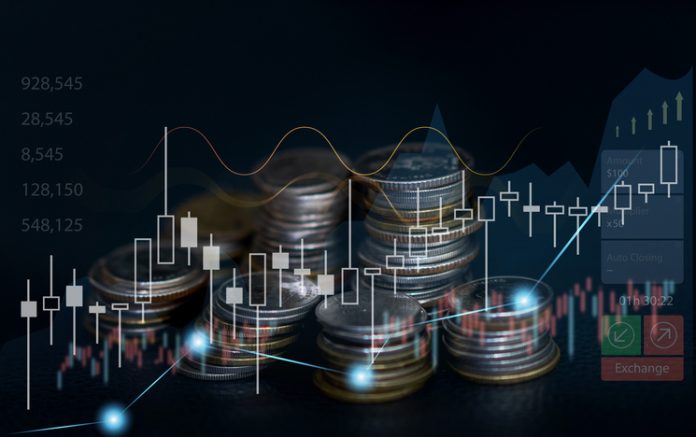Financial markets have evolved considerably beyond traditional stocks and bonds in recent years. Two fields that have captured investors’ attention are cryptocurrencies and foreign exchange, more commonly known as Forex. Cryptocurrency trading involves buying and selling decentralized digital assets, while forex trading involves exchanging currencies of various countries through a centralized market.
Despite their fundamental differences, both markets share certain similarities when it comes to providing high-risk/high-reward opportunities. Besides, trading in either market requires an in-depth knowledge of all the variables influencing price movements (from economic factors to geopolitical events) to achieve successful trading experiences.
By analyzing the differences and similarities between these two markets, traders can expand their investment opportunities and maximize their returns. Let’s dive to explore more.
An Overview Of Crypto And Forex Trading
The Foreign Exchange market is the world’s largest trading market, with a daily volume estimated at nearly $6 billion US dollars. This market involves exchanging national fiat currencies like EUR and USD or GBP and USD. At the same time, traders speculate on the movement of one currency against another, aiming to gain profit from the price fluctuations.
On the other hand, cryptocurrency trading is a relatively new market compared to forex. The daily trading volume of the crypto market is nearly $50 billion. Cryptocurrency involves trading digital currency, and blockchain technology forms the basis of crypto assets. In addition to this, blockchain payment gateways are used to manage payments in cryptocurrency. The market operates 24/7, allowing traders to buy and sell digital assets anytime.
Differences Between Crypto And Forex Trading
There are significant differences between Crypto and Forex trading in terms of market size and how they work. Let’s find out.
1. Trading Platforms
A significant difference between crypto and forex trading lies in their respective trading platforms. Forex trading is typically conducted through Over-the-Counter (OTC) networks where buyers and sellers interact directly.
Meanwhile, cryptocurrency trade occurs mainly on centralized exchanges facilitating buying and selling digital assets.
2. Market Timings
The cryptocurrency market operates 24/7, 365 days a year, allowing traders to access the market anytime.
In contrast, the forex market is open five days a week, from Monday to Friday, and hence traders must consider market timings when planning their trading activities.
3. Intermediaries
Forex trading often uses intermediaries or middle men, such as brokers, to facilitate trades between traders and the market. In return, these middle men charge fees and commissions for the service they provide.
However, that’s not the case in cryptocurrency. Cryptocurrency allows traders to trade directly through exchanges with a minimum transaction fee.
4. Volatility
Volatility, another difference between Crypto and Forex trading, refers to the magnitude of price fluctuations in any market. In recent years, Cryptocurrency markets have been known for their high volatility, as the market often experiences significant price swings within short timeframes.
On the other side, Forex markets, particularly major currency pairs, tend to be less volatile. Trading in cryptocurrency can potentially reap financial gains, but traders must be prepared for increased risks associated with rapid price movements.
5. Liquidity
An asset’s liquidity refers to how easy it is to purchase or sell it without significantly impacting its price. In forex trading, liquidity is high since currencies are traded on a global scale, with many participants involved. Even large trades do not have an enormous effect on prices in this market because currency pairs like EUR/USD account for approximately 24% of daily forex volumes due to constant demand.
However, compared to forex trading, the liquidity in the cryptocurrency market is relatively low. Out of all major cryptocurrencies, only Bitcoin (BTC) can be labeled as a liquid asset, but due to the fixed number of Bitcoin tokens in circulation, it increases the risk of loss. This can result in higher volatility and price fluctuations, making it more challenging for traders to manage risk effectively.
6. Security
Security depends on the regulation and control in the market, and the forex market is heavily regulated and controlled, which means that forex traders have lower risks. Besides, the forex trading market is well-developed, and frauds and scams are mostly handled.
On the other hand, the cryptocurrency market is an emerging market and faces inconsistent flow. As a result, it’s more volatile and prone to risk and scam that compromises its security.
Similarities Between Crypto And Forex Trading
Crypto and forex trading involves buying and selling to make profits, and they both share some similarities despite being different types of markets. Learning about these similarities can help us understand how crypto and forex trading work.
1. Supply And Demand Factors
Both crypto and forex markets operate according to the principles of supply and demand. The price of any fiat currency or cryptocurrency, such as BTC, is influenced by the balance between supply and demand. When demand exceeds supply, prices tend to increase, and vice versa.
2. Digital Platforms
Crypto and forex trading take place online via digital platforms. Traders can access these markets from any location using various online trading platforms. These trading platforms provide tools and charts to analyze market trends and make informed trading decisions.
3. Flexibility
Both markets offer flexibility to traders. Whether you choose crypto or forex trading, you have the freedom to trade at any time and from anywhere. The decentralized nature of cryptocurrencies enables 24/7 trading, while forex markets operate during weekdays.
4. Understanding Markets
Successful trading in both crypto and forex markets requires a certain level of understanding and awareness of technical factors.
Traders need to study charts, track market movements, and be up-to-date with any news that might impact prices. Technical analysis plays a crucial role in identifying potential entry and exit points for profitable trades.
5. Use Of Bots
Both crypto and forex trading can utilize online auto bots, also known as robots, to automate trading strategies.
These bots use predefined algorithms to execute trades based on market conditions and predefined rules. Automated trading can help traders take advantage of opportunities in the market without constantly monitoring them.
Conclusion
To sum up, Forex and Crypto trading have both differences and similarities. Both types of trading require careful planning to manage risks and loss.Forex trading is known for its stability and security, focusing on trading fiat currencies. In contrast, crypto trading involves digital currencies. It’s important to learn about these differences and similarities so you can make good choices when you want to trade in these markets that are always changing.
Disclaimer: This article contains sponsored marketing content. It is intended for promotional purposes and should not be considered as an endorsement or recommendation by our website. Readers are encouraged to conduct their own research and exercise their own judgment before making any decisions based on the information provided in this article.


































































